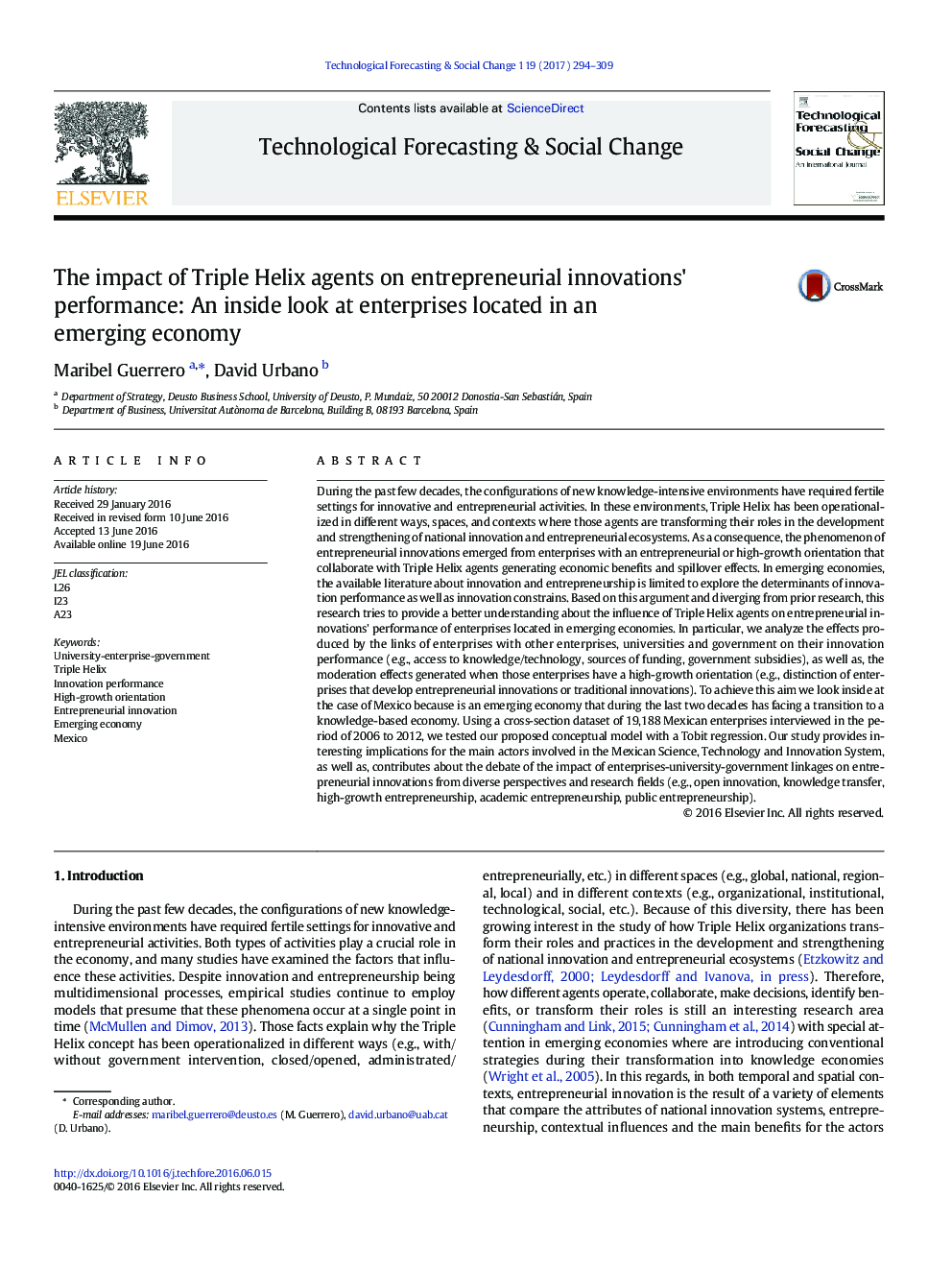| کد مقاله | کد نشریه | سال انتشار | مقاله انگلیسی | نسخه تمام متن |
|---|---|---|---|---|
| 5036950 | 1472382 | 2017 | 16 صفحه PDF | دانلود رایگان |

- High-growth enterprises generate entrepreneurial innovations.
- Triple Helix produces positive effects on entrepreneurial innovations' performance.
- Enterprises are more likely to use internal funds for innovation than external sources.
- Government subsidies produce positive effect on non-high-growth enterprises.
- Socio-economic context produces a negative impact on entrepreneurial innovations' performance.
During the past few decades, the configurations of new knowledge-intensive environments have required fertile settings for innovative and entrepreneurial activities. In these environments, Triple Helix has been operationalized in different ways, spaces, and contexts where those agents are transforming their roles in the development and strengthening of national innovation and entrepreneurial ecosystems. As a consequence, the phenomenon of entrepreneurial innovations emerged from enterprises with an entrepreneurial or high-growth orientation that collaborate with Triple Helix agents generating economic benefits and spillover effects. In emerging economies, the available literature about innovation and entrepreneurship is limited to explore the determinants of innovation performance as well as innovation constrains. Based on this argument and diverging from prior research, this research tries to provide a better understanding about the influence of Triple Helix agents on entrepreneurial innovations' performance of enterprises located in emerging economies. In particular, we analyze the effects produced by the links of enterprises with other enterprises, universities and government on their innovation performance (e.g., access to knowledge/technology, sources of funding, government subsidies), as well as, the moderation effects generated when those enterprises have a high-growth orientation (e.g., distinction of enterprises that develop entrepreneurial innovations or traditional innovations). To achieve this aim we look inside at the case of Mexico because is an emerging economy that during the last two decades has facing a transition to a knowledge-based economy. Using a cross-section dataset of 19,188 Mexican enterprises interviewed in the period of 2006 to 2012, we tested our proposed conceptual model with a Tobit regression. Our study provides interesting implications for the main actors involved in the Mexican Science, Technology and Innovation System, as well as, contributes about the debate of the impact of enterprises-university-government linkages on entrepreneurial innovations from diverse perspectives and research fields (e.g., open innovation, knowledge transfer, high-growth entrepreneurship, academic entrepreneurship, public entrepreneurship).
Journal: Technological Forecasting and Social Change - Volume 119, June 2017, Pages 294-309